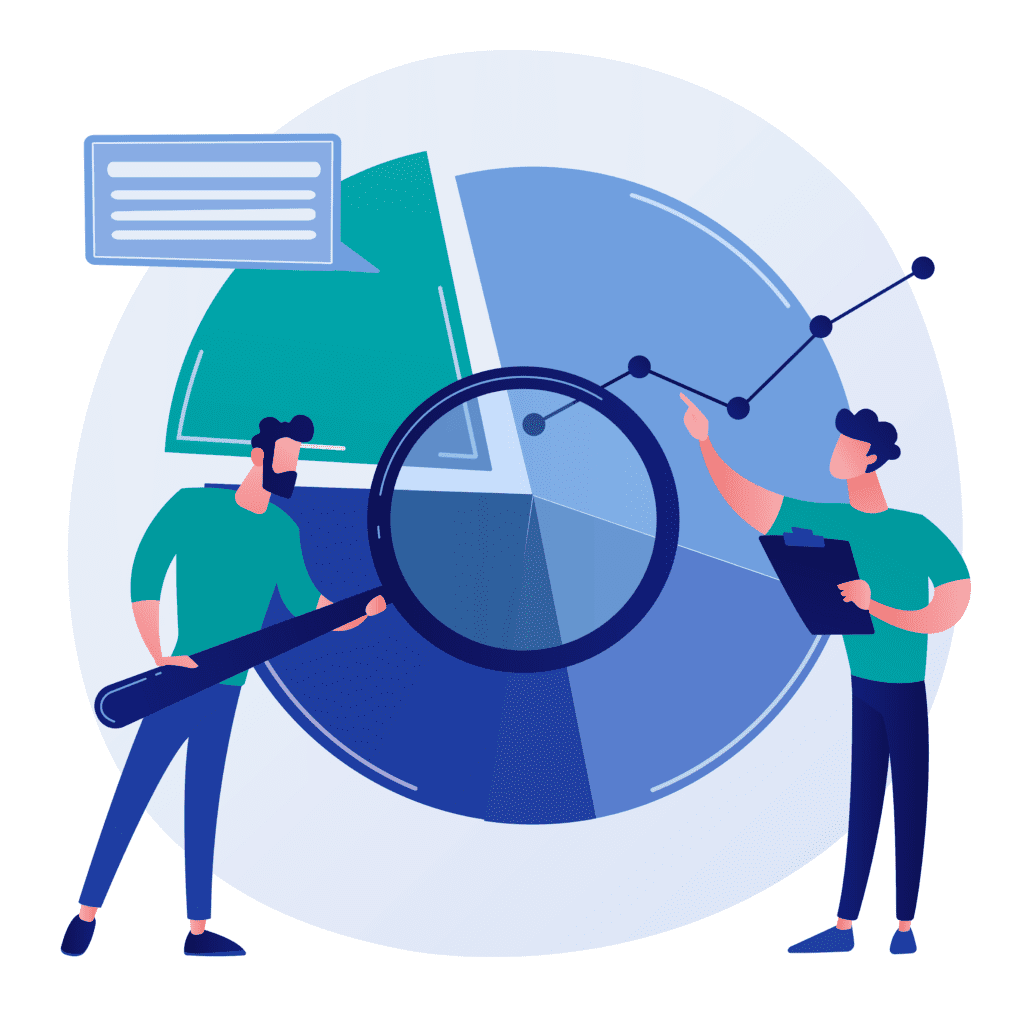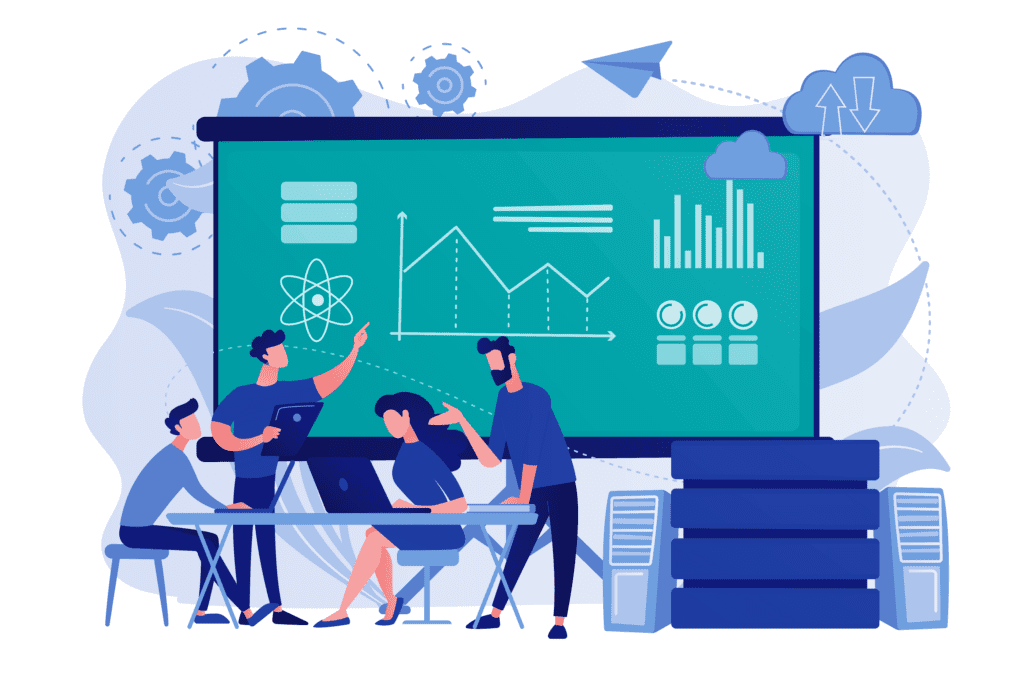
Data Analytics, Big Data & Data Science
Data Analysis & BI
What Is Data Analysis – Advantages for Your Company at a Glance
Data analysis is defined as a process of cleansing, transforming and modeling data to discover useful information for decision making in businesses. The purpose of data analysis is to extract useful information from the data and make a decision based on the results.
- Customer acquisition and retention
- Personalization of Customer Experience
- Targeted campaigns
- Identification of potential risks
- Innovative Products


prelytics offers your company a wide range of services in the field of data analysis, which makes it possible to transform historical and traditional data, real-time data and big data into understandable insights and visual representations. We use intelligent machine learning algorithms and cutting-edge technologies to get the most out of your data and give you deep data insights that help you better understand your business.
- Customer Analysis
- Finance Analysis
- Marketing Analysis
- Sales Analysis
- HR-Analysis
- Operational Analysis

Data Analysis in Businesses
Data Analysis Process
The process of data analysis consists of collecting data using an appropriate application or tool that allows you to analyze the data and identify patterns. Based on the insights and facts gained, you can make judgments or draw final conclusions. The data analysis consists of the following phases:
1

Gathering of Requirements
First of all, think about why you want to perform this data analysis. Now all you have to do is figure out what the purpose or goal of big data is. In this phase you have to determine what you want to analyze and how you want to evaluate it, why you do research and which methods you will use for this analysis.
2

Data Collection
After gathering requirements, you’ll have a better idea of what you need to measure and what you want your results to look like. Now it’s time to start collecting data that meets the criteria. Remember that once you collect your data for analysis, you must prepare or organize it. If you collect data from different sources, you must keep a log of the date of collection and the source of the data.
3

Data Cleansing
The data you have collected may not be valuable or related to the objective of your analysis and should therefore be cleaned. There may be duplicate records, blank spaces, or inaccuracies in the data collected. The data should be error-free and tidy. This step must be performed before the analysis, as the result of the analysis will be closer to the intended result if the data is cleaned beforehand.
4

Data Analysis
Data is ready for analysis once collected, cleaned and processed. As you work through the data, you may find that you already have all the information you need, or that you need more information. At this stage, you can use data analysis tools and software to help you understand, analyze, and draw conclusions from the requirements.
5

Data Evaluation
After you’ve analyzed your data, it’s time to interpret your results. You can describe or explain your data analysis in a number of ways, e.g. B. simply in words, in a table or in a diagram. Then, based on the results of your data analysis, determine the best course of action.
6
Data Visualization
The visualization of data is quite common in everyday life and is mostly in the form of charts and tables. In other words, data is presented graphically to make it easier for the human brain to understand and digest. Unknown facts and patterns are often discovered through data visualization. By observing relationships and comparing datasets, you can discover useful knowledge.
Our Offer to you
- Data Visualization – We develop simple, custom GUIs and dashboards to efficiently monitor your data and business metrics, monitor progress, discover trends and spot suspicious behavior patterns.
- Data warehouse development – We deal with the professional planning and development of a data warehouse for your company or the upgrade of an existing one. These DWs are used to perform queries and analyzes and contain a variety of data from different sources.
- Big data consulting – the prelytics experts support you as technology-independent consultants in the evaluation, selection and implementation of a big data solution individually tailored to your company. We help you to bring structure to data and to drive your company forward on the basis of this.
- Data Management – We develop rules and policies to efficiently control data access, data quality, data integration, etc. in your organization.
- Data Analysis – We support companies that want to rely on a trusted outsourcing partner for data analysis. Prelytics uses advanced technologies to securely handle your data and extract information.
- Advanced Data Analytics – Using machine learning and complex rule-based algorithms, we can apply advanced analysis techniques that go beyond traditional business intelligence and performance management to derive forecasts and instructions for your company.
Do You Have Questions or a Project in Mind?
Talk directly to our prelytics experts, we will be happy to advise you!